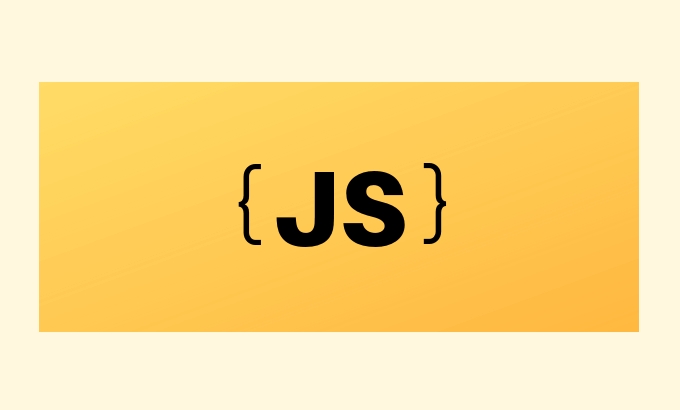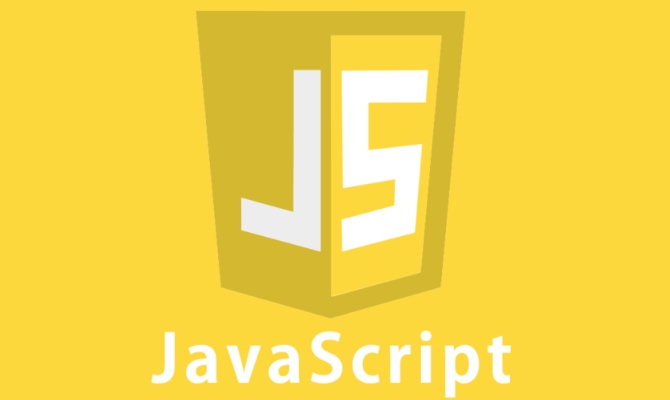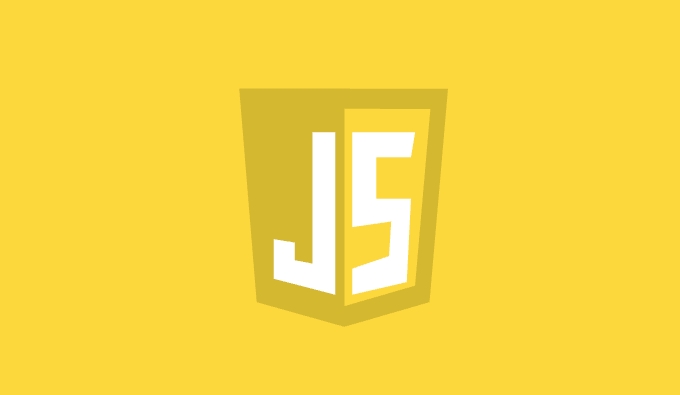Yes, you can start with JavaScript, but you need to understand the core syntax and applicable scenarios. First, you can learn basic programming concepts such as variables, loops, and functions, and write independent logic through environments such as Node.js, such as functions that judge the parity of numbers; second, you can master basic algorithms and solve simple problems. However, to manipulate web page content, you must master the basics of HTML structure and CSS styles, because JavaScript relies on HTML to build DOM and achieve dynamic effects through CSS. It is recommended to be familiar with the basics of JS first, and then supplement the core content of HTML/CSS to complete common web projects.

Yes, technically you can start learning JavaScript without knowing HTML and CSS, but it's not ideal. Here's why: JavaScript in the browser works closely with HTML and CSS to create interactive websites. If you don't understand how HTML structures content or how CSS styles it, your JavaScript won't have much to work with.

That said, if you're curious or just want to jump in, you can pick up basic JS syntax — things like variables, loops, and functions — without prior knowledge. But once you get to DOM manipulation (which is a big part of front-end JS), you'll hit a wall unless you know at least the basics of HTML and CSS.

What You Can Learn in JS Without HTML/CSS
If you're really starting from zero, there are parts of JavaScript you can explore without touching HTML or CSS:
- Core programming concepts : Variables, data types, conditionals, loops, functions.
- Basic algorithms : Writing logic to solve small problems like calculating averages or filtering lists.
- Working in environments like Node.js : Where HTML/CSS aren't involved at all.
For example, you could write a simple function that takes a number and returns whether it's even or odd — no HTML or CSS needed.

Here's what that might look like:
function isEven(num) {
return num % 2 === 0;
}
console.log(isEven(4)); // trueThis kind of learning helps build logic and problem-solving skills, which are super valuable later on.
Why HTML and CSS Still Matter for Learning JS
Even though you can learn some JS first, here's why HTML and CSS are important to at least understand early on:
- The DOM is built from HTML : When you use JavaScript to change text, add classes, or respond to clicks, you're interacting with elements defined in HTML.
- CSS affects what JS does : For example, when you toggle a menu with JS, you're often adding or removing a CSS class that controls visibility.
- Most beginner projects involve web pages : Things like to-do apps, calculates, or image sliders rely on HTML structure and CSS styling.
So while you might be able to write standalone functions without HTML/CSS, the moment you want to connect your code to a visible result in the browser, you'll need those two pieces.
How to Approach It If You're Starting With JS First
If you're still set on diving into JavaScript before HTML and CSS, here's how to make it work:
-
Start with core JavaScript syntax using tools like:
-
Once you feel comfortable with variables, functions, and loops, spend a few hours learning:
- Basic HTML structure (
<div> , <code><button></button>, etc.) - How to select elements with
document.querySelector - Simple CSS like classes and display properties
You don't need to become an expert in HTML/CSS first — just enough to follow along when you start manipulating the page with JS.
TL;DR
Yes, you can start learning JavaScript without HTML and CSS, especially the logic and syntax parts. But once you want to interact with web pages — which is one of JS's main uses — you'll need at least the basics of HTML and a little CSS. So ideally, learn a bit of both alongside JS as you go.
Basically that's it.
- Basic HTML structure (
The above is the detailed content of Can I learn js without knowing HTML and CSS?. For more information, please follow other related articles on the PHP Chinese website!

Hot AI Tools

Undress AI Tool
Undress images for free

Undresser.AI Undress
AI-powered app for creating realistic nude photos

AI Clothes Remover
Online AI tool for removing clothes from photos.

Clothoff.io
AI clothes remover

Video Face Swap
Swap faces in any video effortlessly with our completely free AI face swap tool!

Hot Article

Hot Tools

Notepad++7.3.1
Easy-to-use and free code editor

SublimeText3 Chinese version
Chinese version, very easy to use

Zend Studio 13.0.1
Powerful PHP integrated development environment

Dreamweaver CS6
Visual web development tools

SublimeText3 Mac version
God-level code editing software (SublimeText3)

Hot Topics
 Why should you place tags at the bottom of the ?
Jul 02, 2025 am 01:22 AM
Why should you place tags at the bottom of the ?
Jul 02, 2025 am 01:22 AM
PlacingtagsatthebottomofablogpostorwebpageservespracticalpurposesforSEO,userexperience,anddesign.1.IthelpswithSEObyallowingsearchenginestoaccesskeyword-relevanttagswithoutclutteringthemaincontent.2.Itimprovesuserexperiencebykeepingthefocusonthearticl
 What is event bubbling and capturing in the DOM?
Jul 02, 2025 am 01:19 AM
What is event bubbling and capturing in the DOM?
Jul 02, 2025 am 01:19 AM
Event capture and bubble are two stages of event propagation in DOM. Capture is from the top layer to the target element, and bubble is from the target element to the top layer. 1. Event capture is implemented by setting the useCapture parameter of addEventListener to true; 2. Event bubble is the default behavior, useCapture is set to false or omitted; 3. Event propagation can be used to prevent event propagation; 4. Event bubbling supports event delegation to improve dynamic content processing efficiency; 5. Capture can be used to intercept events in advance, such as logging or error processing. Understanding these two phases helps to accurately control the timing and how JavaScript responds to user operations.
 A definitive JS roundup on JavaScript modules: ES Modules vs CommonJS
Jul 02, 2025 am 01:28 AM
A definitive JS roundup on JavaScript modules: ES Modules vs CommonJS
Jul 02, 2025 am 01:28 AM
The main difference between ES module and CommonJS is the loading method and usage scenario. 1.CommonJS is synchronously loaded, suitable for Node.js server-side environment; 2.ES module is asynchronously loaded, suitable for network environments such as browsers; 3. Syntax, ES module uses import/export and must be located in the top-level scope, while CommonJS uses require/module.exports, which can be called dynamically at runtime; 4.CommonJS is widely used in old versions of Node.js and libraries that rely on it such as Express, while ES modules are suitable for modern front-end frameworks and Node.jsv14; 5. Although it can be mixed, it can easily cause problems.
 How does garbage collection work in JavaScript?
Jul 04, 2025 am 12:42 AM
How does garbage collection work in JavaScript?
Jul 04, 2025 am 12:42 AM
JavaScript's garbage collection mechanism automatically manages memory through a tag-clearing algorithm to reduce the risk of memory leakage. The engine traverses and marks the active object from the root object, and unmarked is treated as garbage and cleared. For example, when the object is no longer referenced (such as setting the variable to null), it will be released in the next round of recycling. Common causes of memory leaks include: ① Uncleared timers or event listeners; ② References to external variables in closures; ③ Global variables continue to hold a large amount of data. The V8 engine optimizes recycling efficiency through strategies such as generational recycling, incremental marking, parallel/concurrent recycling, and reduces the main thread blocking time. During development, unnecessary global references should be avoided and object associations should be promptly decorated to improve performance and stability.
 How to make an HTTP request in Node.js?
Jul 13, 2025 am 02:18 AM
How to make an HTTP request in Node.js?
Jul 13, 2025 am 02:18 AM
There are three common ways to initiate HTTP requests in Node.js: use built-in modules, axios, and node-fetch. 1. Use the built-in http/https module without dependencies, which is suitable for basic scenarios, but requires manual processing of data stitching and error monitoring, such as using https.get() to obtain data or send POST requests through .write(); 2.axios is a third-party library based on Promise. It has concise syntax and powerful functions, supports async/await, automatic JSON conversion, interceptor, etc. It is recommended to simplify asynchronous request operations; 3.node-fetch provides a style similar to browser fetch, based on Promise and simple syntax
 var vs let vs const: a quick JS roundup explainer
Jul 02, 2025 am 01:18 AM
var vs let vs const: a quick JS roundup explainer
Jul 02, 2025 am 01:18 AM
The difference between var, let and const is scope, promotion and repeated declarations. 1.var is the function scope, with variable promotion, allowing repeated declarations; 2.let is the block-level scope, with temporary dead zones, and repeated declarations are not allowed; 3.const is also the block-level scope, and must be assigned immediately, and cannot be reassigned, but the internal value of the reference type can be modified. Use const first, use let when changing variables, and avoid using var.
 JavaScript Data Types: Primitive vs Reference
Jul 13, 2025 am 02:43 AM
JavaScript Data Types: Primitive vs Reference
Jul 13, 2025 am 02:43 AM
JavaScript data types are divided into primitive types and reference types. Primitive types include string, number, boolean, null, undefined, and symbol. The values are immutable and copies are copied when assigning values, so they do not affect each other; reference types such as objects, arrays and functions store memory addresses, and variables pointing to the same object will affect each other. Typeof and instanceof can be used to determine types, but pay attention to the historical issues of typeofnull. Understanding these two types of differences can help write more stable and reliable code.
 How to traverse the DOM tree (e.g., parentNode, children, nextElementSibling)?
Jul 02, 2025 am 12:39 AM
How to traverse the DOM tree (e.g., parentNode, children, nextElementSibling)?
Jul 02, 2025 am 12:39 AM
DOM traversal is the basis of web page element operation. Common methods include: 1. Use parentNode to obtain the parent node, and can be chained to find it upward; 2. children return a collection of child elements, accessing the first or end child elements through the index; 3. nextElementSibling obtains the next sibling element, and combines previousElementSibling to realize the same-level navigation. Practical applications such as dynamically modifying structures, interactive effects, etc., such as clicking the button to highlight the next brother node. After mastering these methods, complex operations can be achieved through combination.






